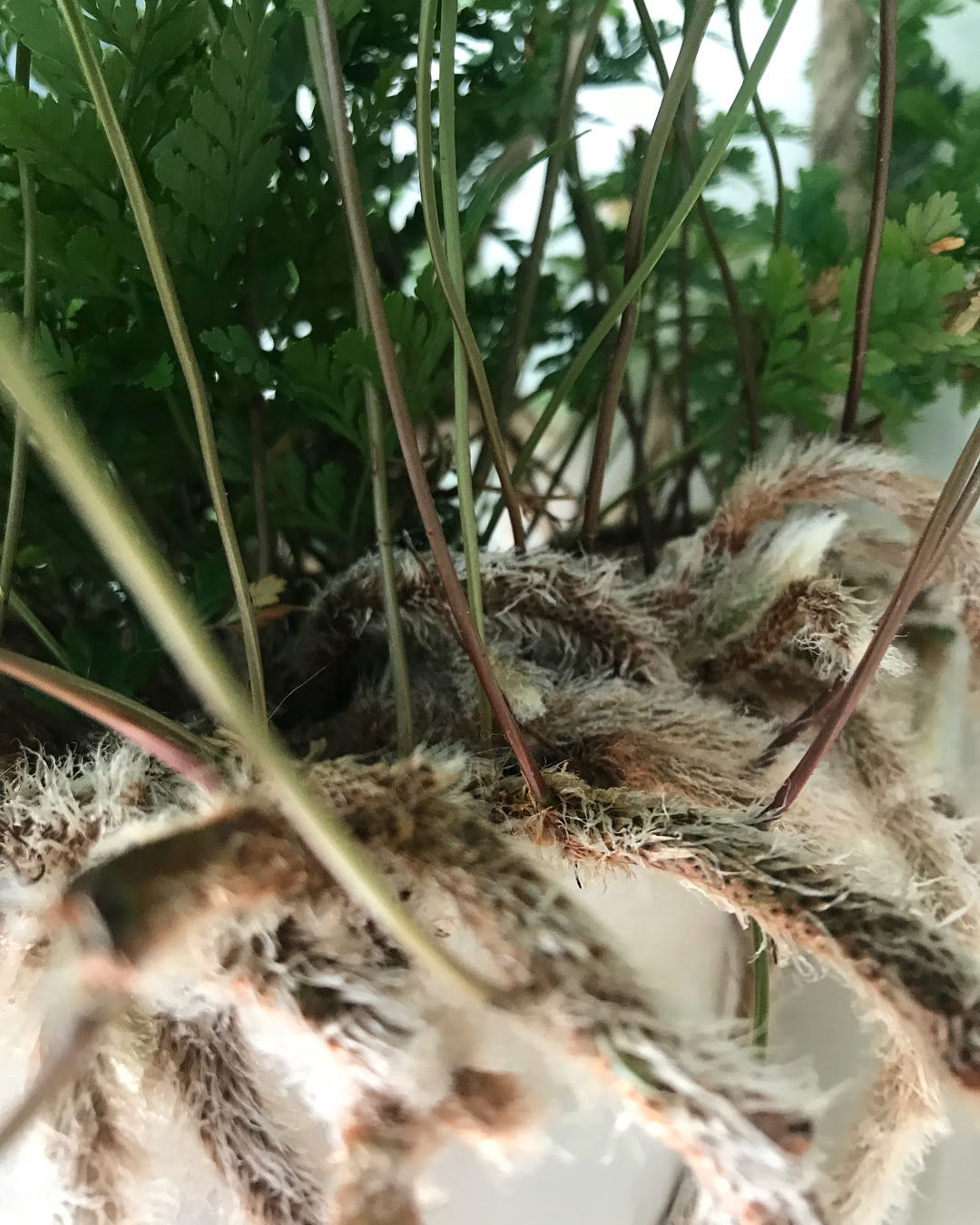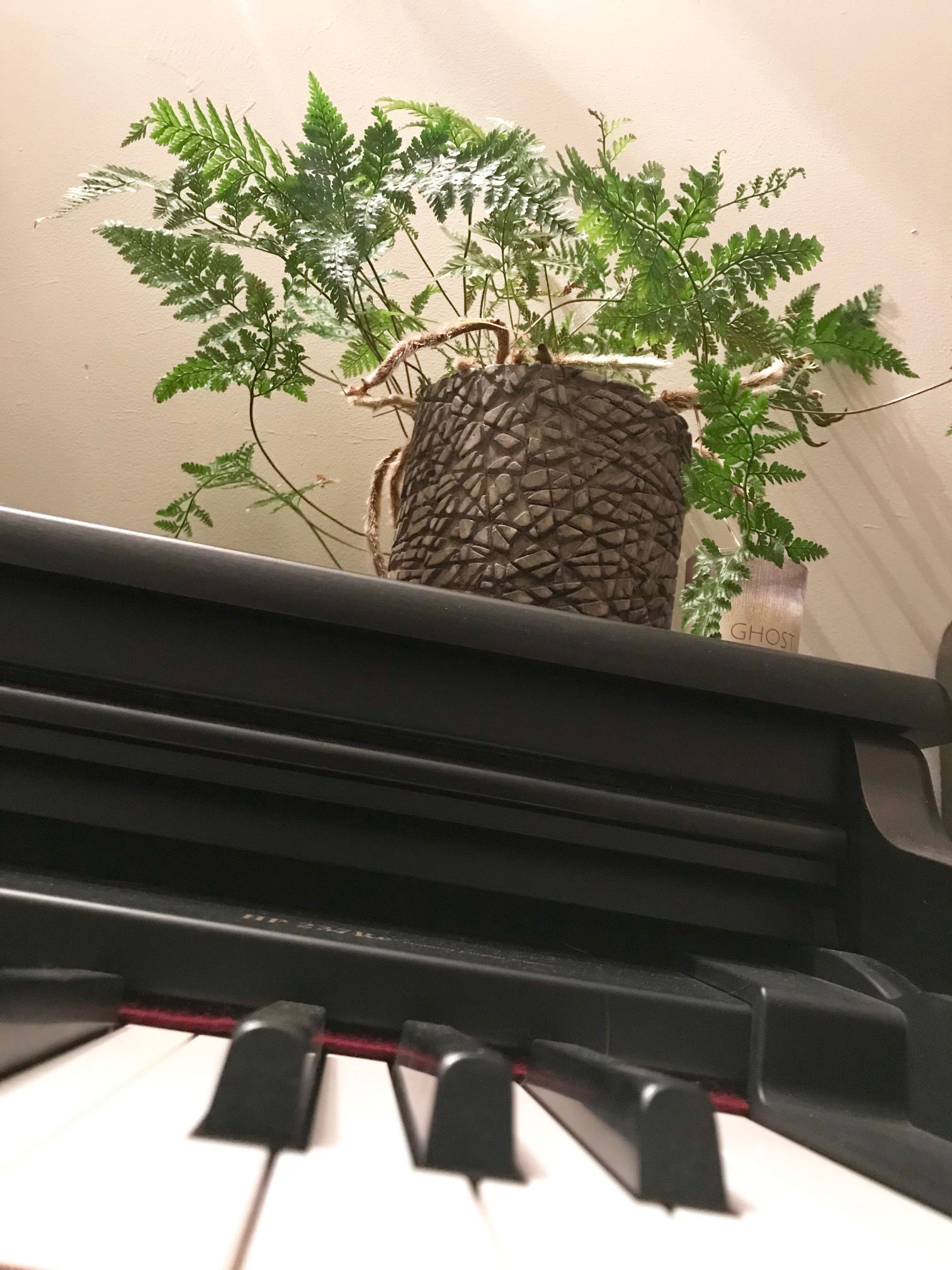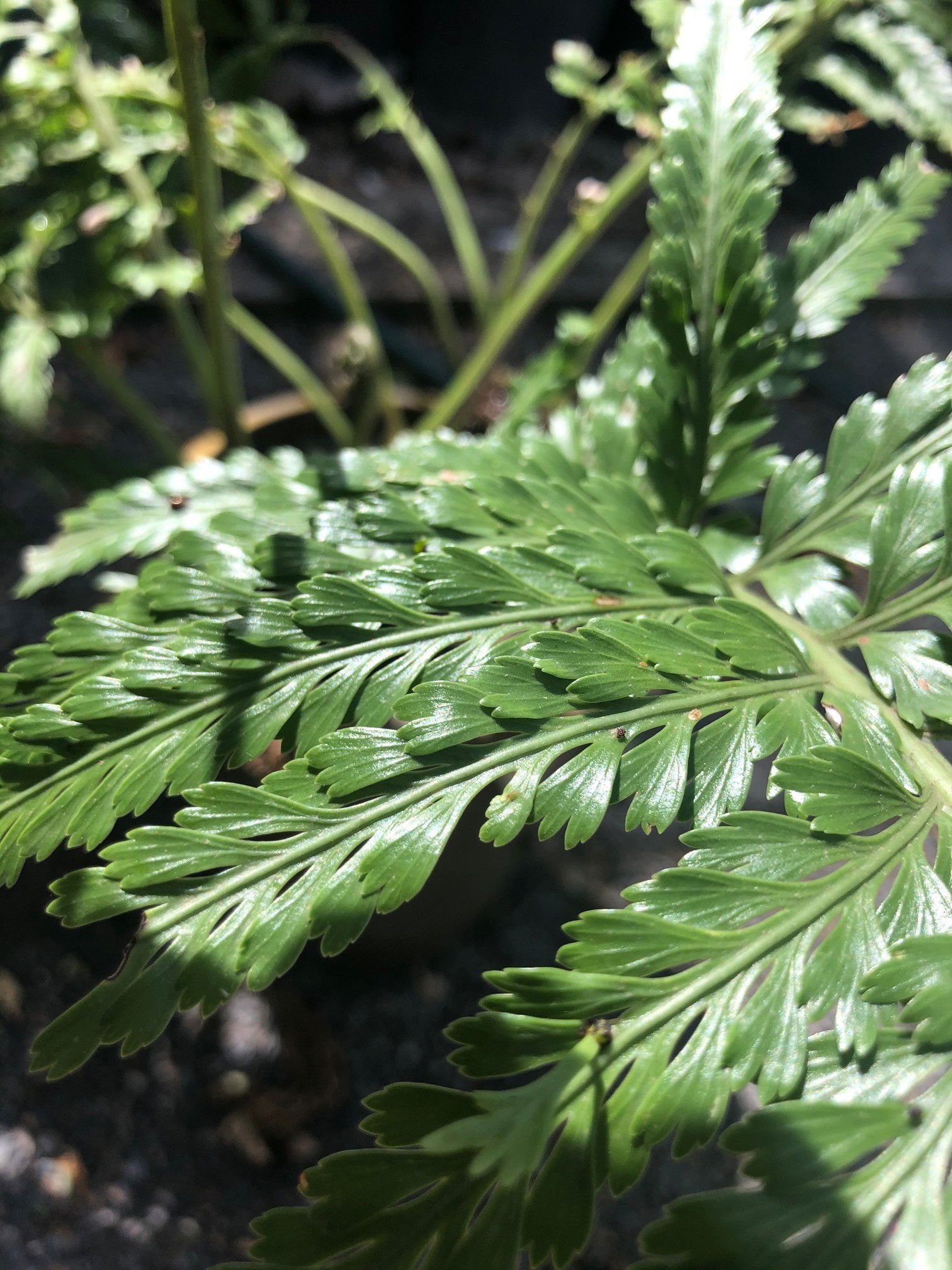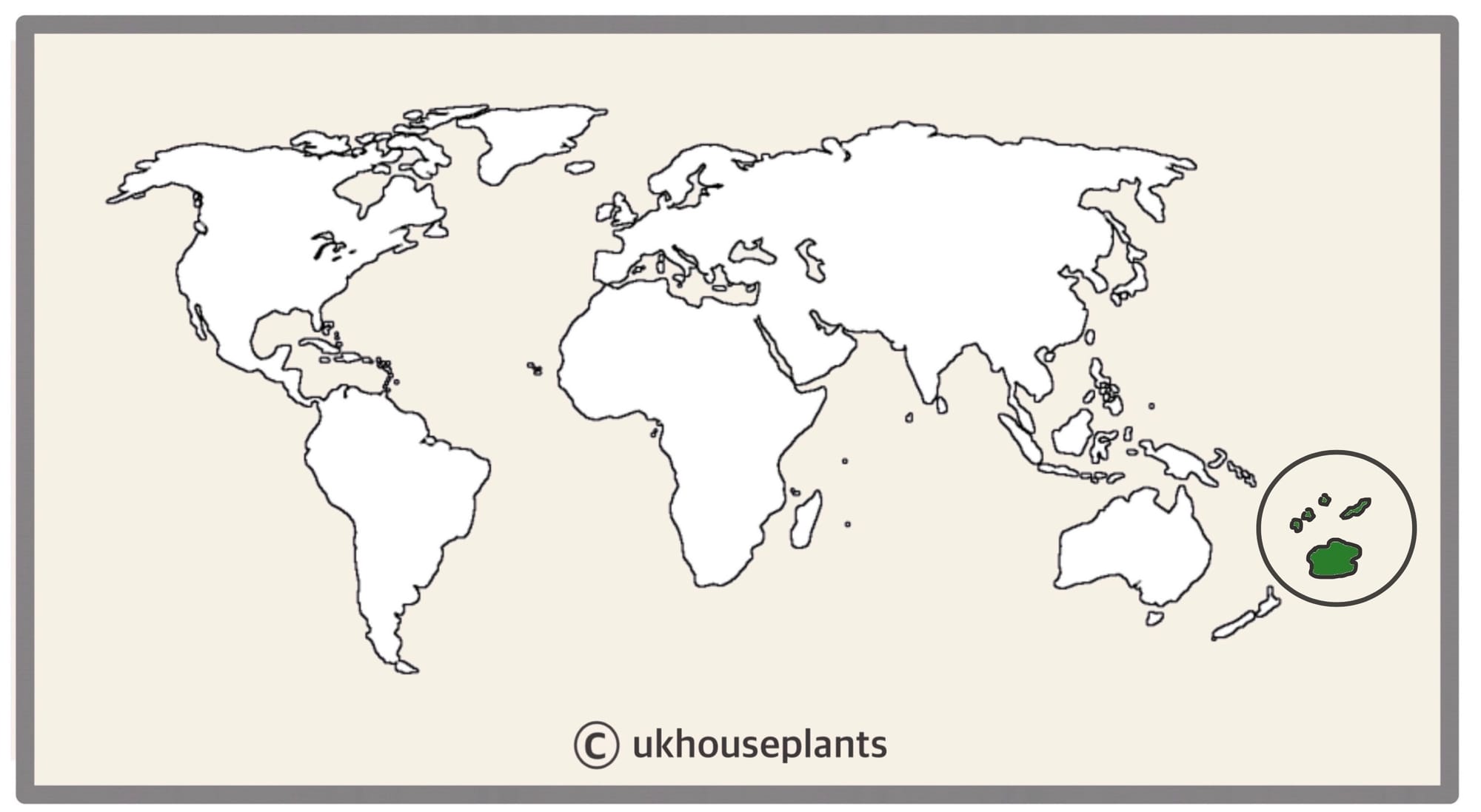
Davallia solida var. fejeensis
Contents
- Top Tips
- Location, Water, Humidity & Fertilisation
- Common Issues
- Origins, Temperature, Propagation, Repotting & Toxicity.
Need the answer to a specific plant query? Book a 1-to-1 video call with THE HOUSEPLANT DOCTOR™, the website's friendly author, to overcome and address your niggling problem! Available on iMessage, WhatsApp, Facebook Messenger & more.
Top Tips & Info
- Care Difficulty - Moderate
- Provide a bright, indirect setting that boasts high humidity and good air circulation.
- Keep the soil relatively moist, allowing the top third to dry out in between waters. Periods of droughts will result in the yellowing or browning of foliage, along with stunted growth.
- Fertilise using a 'Houseplant' labelled feed every four waters in the spring and summer, reducing this to every six in the colder months.
- Repot every three years using a 'Houseplant' labelled soil to deter droughts.
- Keep an eye out for Spider Mites & Aphids that'll be located in the foliage's cubbyholes.
Location & Light - 🔸🔸
Bright indirect light is best; the combination of good soil moisture and a well-lit location will provide the best results for your fern. Sunny areas should be avoided at all costs, as prolonged exposure with dry soil will quickly result in pale leaves, stunted growth and crisping foliage - if it's too hot for a chocolate bar, it'll be too hot for the plant, too!
Alternatively, lower-lit areas should only be used, if wholly necessary. Although Rabbit Foot Ferns can thrive in shady locations, the reduced rates of photosynthesis and too-moist soil will lead to a weakened plant, along with the chance of developing root rot.
Water - 🔸🔸
Rehydrate once the top third of the soil dries out, reducing this slightly further in the autumn and winter. Use the freshest water possible; either buy some bottled water from a store or allow tap water to sit for around 24hrs before application. Letting the water to stand will not only bunk up the temperature, but it will also alleviate the fluoride that can cause an imbalance of nutrients in the soil. Under-watering symptoms include crispy or yellowed leaves and stunted growth, commonly due to either forgetfulness or too much light/heat. Over-watering symptoms include rapidly yellowing leaves at the base, frond, rhizome or root rot. If your specimen is displaying these symptoms, reposition it to a brighter location and reduce irrigations - Rhizoctonia could be an issue with severe cases.
Humidity - 🔸🔸🔸
A good balance of high humidity and good air circulation is a must. Create a humidity tray to provide a moist and stable environment for your plant. If the surrounding saturation is too low or the heat too high, its fronds may start to brown over and curl, especially in direct sunlight. Hose the foliage down from time to time to hydrate the leaves and keep the dust levels down.
While we're on the topic of its atmospheric requirements, air pollution (scented candles, deodorant, cigarettes) must not be used nearby to avoid angering the leaves.
Fertilisation - 🔸🔸
Feed every four waters during the growing period and every six in the autumn and winter, using a 'Houseplant' labelled fertiliser. Never apply a 'Ready to Use’ product into the soil without a pre-water first, as it may burn the roots and lead to yellowed leaves.
 Our beautiful Rabbit Foot Fern sitting proudly on a piano.
Our beautiful Rabbit Foot Fern sitting proudly on a piano.
Common Issues with Rabbit Foot Ferns
When this species is severely dehydrated, most of its leaves will crisp-up and fall off - leaving you with a naked plant. Although it may spell the end of juvenile plantlets, there may still be light at the end of the tunnel for more established specimens. If the stems and leaves are thoroughly crisp, prune the stems to around an inch from the soil line and contain the plant (with its pot) in a transparent bag that has small holes. Keep the soil continually moist, providing a good level of indirect light and temperatures above 15°C (59°F). After a few weeks, new growths will form at the rhizome's terminals, signalling the start of its recovery process. Maintain a sealed environment for the following month until you feel it's necessary to release it back into the open air. For the prevention of environmental shock, be sure to introduce a humidity tray for higher levels of atmospheric moisture around the plant in its new setting. Not only will this ease the specimen back into healthy functioning life, but it'll also reduce the rate of transpiration (water-loss in the leaves), and therefore downplay the risk of dehydration and further decline.
Root or rhizome rot is a common issue among specimens sat in too dark environments with prolonged soil moisture. Symptoms include rapidly yellowing leaves, stunted growth and a rotten brown base. Take the plant out of the pot and inspect health below the soil line. If the roots sport a yellow tinge, you're good to go, but if they're brown and mushy, action must be taken immediately. More information about addressing root rot can be found on this link.
Sudden crispy, grey or wilted foliage shortly after being repotted is a symptom of transplant shock. Increase the humidity around the plant, maintain evenly moist soil and feed every third water with a 'Houseplant' labelled fertiliser. Your Rabbit Foot Fern is wilting due a damaged root system that doesn't uptake enough moisture to keep its foliage hydrated. Wrap the plant (& its pot) in a transparent plastic bag and check for drying soil. Provide a bright, sunless windowsill with temperatures above 18 ℃ (64℉) and wait for new growth to emerge in a few weeks. Additional Step: Purchase a 'foliar feed' from a local garden centre and mist the foliage to nourish the plant, thus helping its recovery process.
 Due to the species' sensitivity to chemicals, Leaf Shine shouldn't be used to improve the appearance of the foliage, and instead should be cleaned using warm soapy water. Failure to do so may cause yellowed, mottled spots that cannot be undone.
Due to the species' sensitivity to chemicals, Leaf Shine shouldn't be used to improve the appearance of the foliage, and instead should be cleaned using warm soapy water. Failure to do so may cause yellowed, mottled spots that cannot be undone.
Too low humidity can cause browning tips with yellow halos on juvenile leaves. Although this won't kill your specimen, you may want to increase the local moisture to prevent the new growth from adopting these symptoms. Mist or rinse the foliage from time to time and create a humidity tray while the heaters are active to create a stable environment. The browning of leaf-tips on older leaves is wholly natural and is the product of extensive photosynthesis during its life.
Black thinner roots (below the golden rhizomes) are natural for Rabbit Foot Ferns. Only treat for root rot if the soil smells 'earthy' and the roots feel collapsed or squishy. Click on this link to learn about this issue and what to do next!
Spider Mites are small, near-transparent critters, that'll slowly suck out the chlorophyll out of the leaves. Have a check under the leaves, most notably along the midrib, for small webs and gritty yellow bumps. Click here to read our article about the eradicating Spider Mites, along with some extra tips that you may not find elsewhere!
If your specimen is located in a dark environment with mould developing on the soil's surface, use a chopstick to stab the soil in various areas gently. You should aim to enter the compost between the base of the plant and the pot's edge, as failure to do so may lead to damaging its lower portion. Leave the holes open for a few days before re-surfacing the soil to avoid it becoming overly dry. Not only will the gentle shift in the soil's structure mimic the work of small invertebrates in the wild (worms, etc.), but it'll also add oxygen back into the soil, thus reducing the risk of root rot. Repeat this monthly, or whenever you feel the potting-mix isn't drying out quickly enough.
Origins
Davallia solida var. fejeensis (Rabbit Foot Ferns) is one of forty species that form the Davallia genus, all of which are epiphytic or lithophytic. This genus primarily originates from Asia and the Pacific, with its name honouring Swiss botanist, Edmond Davall in the 18th century. 'Fejeensis' refers to the Fiji Islands, where this species was first discovered in the mid 1800s.
 The Distribution of D. solida var. fejeensis
The Distribution of D. solida var. fejeensis
Temperature
12° - 26°C (54° - 80°F)
H1b (Hardiness Zone 12) - Can be grown outdoors during the summer in a sheltered location with temperatures above 12℃ (54℉), but is fine to remain indoors, too. If you decide to bring this plant outdoors, don't allow it to endure any direct sunlight as it may result in sun-scorch and dehydration. Regularly keep an eye out for pests, especially when re-introducing it back indoors.
Spread
Up to 0.6m in height and 1m in width, depending on the pot size. The ultimate height will take between 5 - 10 years to achieve, with up to 8cm of rhizomatous growth per season.
Pruning & Maintenance
Remove yellow or dying leaves, and plant debris to encourage better-growing conditions. While pruning, always use clean scissors or shears to reduce the chance of bacterial and fungal diseases. Never cut through yellowed tissue as this may cause further damage in the likes of diseases or bacterial infections. Remember to make clean incisions as too-damaged wounds may shock the plant, causing weakened growth and a decline in health.
Propagation
Via Spores, Division or Rhizome Cuttings.
Spores (Easy) - You may have noticed little brown spots under the leaves - those are reproductive spores that can be propagated in the same way as seeds, once matured. These zygotes will develop on the under-leaves of each frond; you'll know when they're ready to be propagated, as they'll brown over and begin to crisp.
- Choose an appropriate potting-mix; we'd recommend a 'Houseplant' labelled compost as it boasts a good balance of drainage and water retention. Place the soil into a plastic pot (any size is fine) that has adequate drainage holes.
- Separate the spores from the under-leaves using your hands. If the spores are brown and crispy, but can't be removed, cut the entire frond off. Make sure that the diameter of the pot is wider than the frond's span; however, you can cut the frond (sideways) to fit the desired container better.
- Place the spores or fronds ON TOP of the compost, making sure that they sit flat against the soil-line.
- If you've managed to separate the spores, maintain moist soil by misting the top layer every few days. Do not submerge into the compost as this will reduce the rates of success. For those who still have entire fronds, place the foliage on top of dry compost. The dehydration will allow the spores to detach from the leaf, settling on the soil below.
- Place the potted spores/fronds into a transparent bag and situate it into a bright, indirect location. Provide temperatures above 18°F (64°F).
- Keep the spores moist, misting the top layer of the soil every few days. The fronds, however, must stay dry until you start to notice missing spores from the under-leaves. Once the majority have detached, discard the frond and begin misting the soil to aid hydration.
- As long as you provide high humidity (aided by the transparent bag locking in moist air) and good soil moisture, germination should begin. This process can take up to two months, but don't discard until it hits five months of nothingness.
Once the spores have developed their first frond, place them into their own pot to grow. Safely remove the transparent bag and follow the care requirements listed at the top of the article.
Division (Easy) - The best time to divide is during the repotting period. Gently tease away some of the soil, separating fleshy rhizomes with sections of the original root systems and plenty of foliage. Place the separated plantlets in a moist, 'Houseplant' labelled potting mix and avoid direct sunlight with prolonged droughts. Although this method is quite easy, be mindful of transplant shock and do not perform this method if the plant is displaying signs of stress. Always moisten the soil 24hrs before repotting or division to avoid shocking the root systems.
Rhizome Cuttings (Easy) - Choose the healthiest, most established rhizomes that show no signs of damage or disease. This method can be taken from spring to early summer, using between two to four fronds within each rhizomatous section. Cut directly below a node using a clean knife, and separate its root systems from the rest of the root ball. Make sure the propagated rhizome is at least 8cm (3 inches) in length so that it has enough stored energy to continue growing. Plant it straight into a moist, 'Houseplant' labelled potting mix to avoid root rot. Sprinkle a half a centimetre of soil onto of the rhizome to lock in surrounding moisture and wait for new growth that may take up to several weeks. Avoid direct sunlight and offer high humidity with temperature (15°C, 59°C) for success. After its second new leaf, treat it like a normal specimen, following the care tips above!
Flowering
True ferns will not flower and instead must be propagated by either spores, rhizomes, depending on the species.
Repotting
Repot every three years in the spring, using a 'Houseplant' labelled compost and the next sized pot with adequate drainage. Hydrate the plant 24hrs before tinkering with the roots to prevent the risk of transplant shock. For those that are situated in a darker location, add a thin layer of small grit in the pot's base to improve drainage and downplay over-watering. Click here for a detailed step-by-step guide on transplantation, or via this link to learn about repotting with root rot.
Pests & Diseases
Keep an eye out for mealybugs, aphids, spider mites, scale, thrips, blackfly, vine weevils & root mealybugs that'll locate themselves in the cubbyholes and undersides of the leaves, with the exception of the latter two in the soil. Common diseases associated with Rabbit Foot Ferns are root rot, leaf-spot disease, botrytis, rust, Rhizoctonia, powdery mildew & southern blight - click here to learn more about these issues.
N. B. - Although spraying chemical-based pesticides onto the foliage won't necessarily hurt the plant, its sensitive nature to certain chemicals could cause yellowed leaves and reduced growth. ukhouseplants recommends using homemade pesticides such as garlic water, as it won't contain harmful pesticides that could burn the foliage.
Book a 1-to-1 video call with Joe Bagley if you'd like a personal guide to repotting your houseplant. This will include recommending the right branded-compost and pot size, followed by a live video call whilst you transplant the specimen for step-by-step guidance and answer any further questions!
Toxicity
Not known to be poisonous by consumption of pets and humans. If high quantities are eaten, it may result in vomiting, nausea and a loss of appetite.
Retail Locations
Online Stores.
Book a 1-to-1 Call with THE HOUSEPLANT DOCTOR™
If you need further advice with your houseplants, book an advice call with ukhouseplants' friendly and expert writer today! This can be done via a video or audio call on most apps, including Facebook, FaceTime & Skype. A ten-minute call costs £5.99 (US$7), or £15.99 for thirty minutes. You can ask multiple questions, including queries on plants, pests, terrariums, repotting advice and anything in between. Please consider supporting this service to keep ukhouseplants thriving!